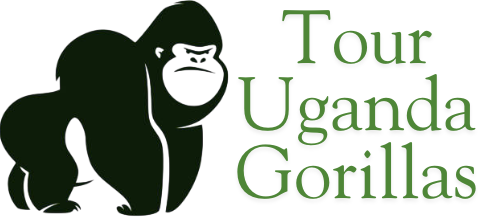Congo
- Home
- Congo
The Democratic Republic of Congo offers one of the most authentic and adventurous mountain gorilla experiences on the continent. Unlike Rwanda and Uganda, gorilla trekking in Congo is less commercialized, offering smaller crowds, untamed trails, and the thrill of discovering the endangered mountain gorillas in a more remote setting.
Gorilla Population in Congo
Congo is home to a significant portion of the Virunga mountain gorilla population, which totals roughly 300 individuals within Virunga National Park. In addition to mountain gorillas, Congo is the only country where visitors can see all three great ape species: mountain gorillas, eastern lowland (Grauer’s) gorillas, and chimpanzees.
Only a handful of gorilla families are habituated for trekking in Virunga, which limits the number of permits and creates an intimate, deeply personal experience with these great apes.
Gorilla Tourism & Government Support
Tourism in DRC is gradually recovering, with Virunga National Park playing a central role in conservation and community development. The Congolese Institute for Nature Conservation (ICCN) manages permits and ranger programs with support from international partners. While challenges remain, revenue from gorilla tourism directly funds conservation work, ranger salaries, and community health and education programs.
Virunga National Park – Congo’s Gorilla Trekking Hub
Established in 1925, Virunga is Africa’s oldest national park and a UNESCO World Heritage Site. Located in eastern DRC, it shares a border with Rwanda and Uganda. Gorilla treks here take place in dense montane forests nestled between volcanoes and alpine meadows.
Distance & Access
From Goma (main entry point): ~45 km to park headquarters at Bukima
From Kigali, Rwanda: ~3.5 hours drive to Gisenyi, then cross to Goma via the Grande Barrière border
Entry Point for Tourists: Grande Barrière border crossing, with tourism permits processed at the Virunga office
Park staff will arrange secure transport from Goma to the Bukima patrol post, the main starting point for gorilla treks.
Accommodation Options
Virunga offers rustic yet comfortable accommodations, often operated by the park itself. These include:
Mikeno Lodge – Upscale, nestled in forested grounds near the Senkwekwe Gorilla Orphanage
Bukima Tented Camp – Located right at the gorilla trekking trailhead
Kibumba Tented Camp – Budget-friendly and popular with trekking groups
Goma City – Offers hotels for travelers who prefer to stay near the border (used before or after park visits)
All park-based stays include meals, hot water, and basic amenities.
Best Time to Visit
Dry Seasons: Mid-December to February & June to September
These months offer drier trails and clearer visibility.Wet Seasons: March to May & October to mid-December
Rain can make trekking more demanding, but gorillas are still accessible.
Permits can sell out quickly in the dry season, so advanced planning is essential.
Safety & Security
Virunga has had periods of closure due to security concerns. The park only reopens when conditions are stable. Treks are heavily protected by armed rangers and security teams, and tourist safety is a top priority.
It’s mandatory to book through approved operators, and all travelers must report to park offices and follow the designated itinerary. The park works closely with the Congolese military and UN peacekeepers to ensure secure zones for tourism.
Tour Uganda Gorillas, in partnership with Alpha Adventure Safaris, monitors the security situation closely and arranges only permitted, safe treks.
What to Wear for a Gorilla Trek in Congo
The forest in Virunga is thick and wild. Here’s what to bring:
Long-sleeved tops and trousers – For scratchy vegetation and insects.
Raincoat – Rain is common even in the dry season.
Hiking boots – High ankle support is key on muddy slopes.
Gloves – To help grip vegetation and protect your hands.
Gaiters (optional) – Useful for deep mud and underbrush.
Hat and insect repellent
Gorilla Families in Virunga National Park
Virunga is home to a number of habituated gorilla families that visitors may be assigned to visit. These groups range in size and personality, with some trekking routes being longer and steeper than others.
Overview of Virunga’s Gorilla Families
| Gorilla Family | Size & Traits | Trail Difficulty |
|---|---|---|
| Rugendo | One of the oldest habituated groups; originally tracked by Dian Fossey. Large family with several blackbacks. | Moderate |
| Munyaga | Known for an unpredictable range and bold silverback. | Moderate to Hard |
| Kabirizi | Among the largest families, led by a dominant silverback. Frequent sightings. | Easy to Moderate |
| Mapuwa | Peaceful group often found near Bukima. | Moderate |
| Lulengo | Originally habituated in the Djomba area. The group tends to move farther afield. | Moderate to Hard |
| Bageni | Newer group with many juveniles; one of the largest in Virunga. | Moderate |
Group allocation is handled by park rangers based on trekking conditions, group size, and fitness level. While family requests can be considered, assignments prioritize group balance and gorilla welfare.
Getting There – Travel & Entry Info
Nearest Airport: Kigali International Airport (Rwanda)
Congo Visa Required: Yes – a special tourist visa is arranged through the park
Park Entry Permit: Must be pre-booked through Virunga National Park or a registered operator
Yellow Fever Vaccination: Mandatory
Malaria Risk: High – bring antimalarial medication and insect repellent
Currency: Congolese Franc (CF), though USD is widely accepted for park payments
Tour Uganda Gorillas Can Secure Your Congo Gorilla Permit
Due to the layered logistics of entering and trekking in Virunga, it’s best to book through an experienced operator. Tour Uganda Gorillas, through its close collaboration with Alpha Adventure Safaris, can secure your gorilla permit, arrange safe cross-border entry, and coordinate transport, accommodation, and your full Virunga experience.
We handle the bureaucracy so you can focus on the adventure.
